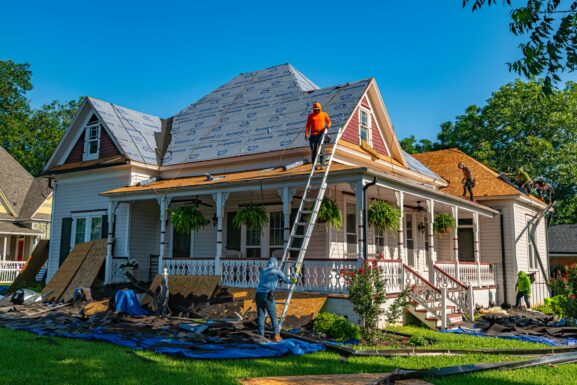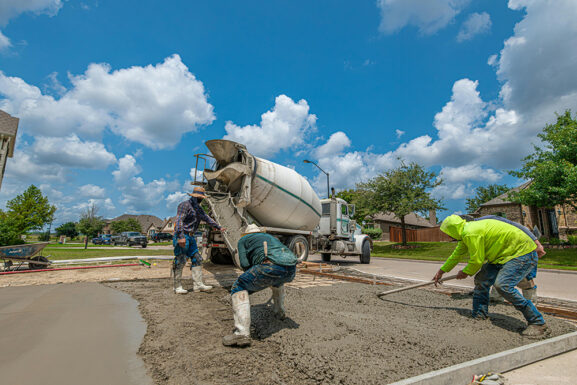Cash Flow Management: Surviving the Feast-or-Famine Cycle
Three months ago, you were turning down work because you were booked solid. Your bank account was healthy, you were thinking about upgrading equipment, maybe even hiring help. Life was good.
Today, you’re staring at a nearly empty project calendar and wondering how you went from feast to famine so quickly. The phone isn’t ringing, existing jobs are wrapping up, and you’re calculating how long your savings will last.
Welcome to the contractor’s curse: the feast-or-famine cycle that keeps business owners awake at night.
According to the Small Business Administration, 82% of small businesses fail due to cash flow problems—not lack of profitability. For contractors, this statistic is even more relevant because seasonal work, economic fluctuations, and project-based income create perfect storms for cash flow disasters.
But here’s what successful contractors know: The feast-or-famine cycle isn’t inevitable. With the right cash flow management strategies, you can smooth out the peaks and valleys, build financial stability, and sleep better regardless of how many jobs are on your calendar.
Understanding the Contractor Cash Flow Cycle
Why Contractors Face Unique Cash Flow Challenges
Project-based income creates natural volatility. Unlike businesses with monthly subscriptions or steady sales, contractors often have large gaps between payments. You might receive $15,000 one week and nothing for the next three weeks.
Seasonal demands amplify the problem. Roofers get slammed in spring but struggle in winter. Landscapers feast in summer and fast in January. Pool contractors live on summer income all year long.
Economic sensitivity hits contractors first. When people tighten their belts, home improvement projects get postponed. Contractors feel economic downturns months before other businesses.
Upfront costs strain cash flow. You often buy materials and pay labor before receiving any payment from clients. A single large project can consume your entire working capital while you wait for the first progress payment.
The Psychological Impact of Income Volatility
Feast periods create false confidence. When money is flowing, it’s easy to increase spending, take on more overhead, or make large purchases without considering the next inevitable valley.
Famine periods trigger panic decisions. Desperation leads to taking unprofitable jobs, dropping prices, or making cash flow decisions that create bigger problems down the road.
The stress affects everything. Inconsistent income doesn’t just hurt your business—it strains relationships, affects sleep, and makes it harder to think strategically about growth.
Building Your Cash Flow Foundation
The Cash Flow Buffer Strategy
Successful contractors maintain 3-6 months of operating expenses in savings. This isn’t just emergency money—it’s working capital that lets you operate confidently during slow periods.
Calculate your true monthly operating costs. Include everything: insurance, vehicle payments, tool financing, business loan payments, and a reasonable salary for yourself. Don’t forget irregular expenses like annual insurance premiums or quarterly tax payments.
Build the buffer gradually during feast periods. Set aside 20-30% of every payment during busy months. This requires discipline when money is flowing, but it’s your lifeline during dry spells.
Keep buffer funds separate from operating accounts. Put cash reserves in a high-yield savings account with Marcus by Goldman Sachs or Ally Bank where you’ll earn interest but won’t accidentally spend it on day-to-day expenses.
The 50-30-20 Rule for Contractors
Adapt the popular budgeting rule for contractor income volatility:
50% for immediate business needs: Current project costs, monthly overhead, equipment maintenance, and your basic salary.
30% for business growth and irregular expenses: Marketing, equipment upgrades, training, insurance premiums, and tax payments.
20% for cash reserves and emergency fund: Building your buffer and preparing for slow periods.
Adjust percentages based on your season. During peak months, you might save 40% and spend 60%. During slow months, you might save nothing and spend carefully from reserves.
Forecasting and Planning
The 90-Day Cash Flow Forecast
Create rolling 90-day cash flow projections that help you see problems before they become crises. Update these weekly as new jobs are booked and existing projects progress.
Track three key elements:
- Money coming in: Scheduled payments from current jobs, potential new project starts, seasonal patterns
- Money going out: Fixed monthly expenses, project-related costs, equipment payments, tax obligations
- Net cash position: Running balance that shows when you might run into trouble
Use simple spreadsheet templates or cash flow tools in QuickBooks to track these projections without getting overwhelmed by complexity.
Seasonal Planning Strategies
Map your historical income patterns. Look at the last 2-3 years to identify your busy and slow seasons. Most contractors have predictable patterns once they track them consistently.
Plan major expenses for high-income periods. Schedule equipment purchases, vehicle maintenance, and business investments during months when cash flow is typically strong.
Build seasonal job pipelines. Book winter indoor work during summer. Schedule spring exterior jobs during winter planning meetings. Always be selling the next season’s work.
Create off-season revenue streams. Offer maintenance contracts, winter services, or consulting during traditionally slow periods.
Managing Income Volatility
Progress Payment Structures
Never finance entire projects yourself. Structure payments so you’re never more than one phase ahead in expenses. This protects your cash flow and reduces project risk.
Standard progress payment structure:
- 30-40% down payment before starting
- 30% at rough-in or midpoint completion
- 30% at substantial completion
- 10% final payment after walkthrough
Adjust percentages based on project size and client trust. Larger projects or new clients might require larger upfront payments.
Diversifying Your Income Streams
Don’t put all your eggs in one project basket. Multiple smaller jobs provide more consistent cash flow than single large projects with long payment cycles.
Develop maintenance and service revenue. Monthly maintenance contracts or emergency service calls provide income during construction lulls.
Consider complementary seasonal work. Landscapers might offer snow removal. Pool contractors could do holiday lighting. Roofers might add gutter cleaning services.
Build relationships with other contractors. Subcontracting work provides income during slow periods and can lead to reciprocal arrangements.
Credit and Financing Strategies
Business Credit Lines for Cash Flow Gaps
Establish business credit lines before you need them. Banks are more willing to lend when your business is healthy than when you’re desperate for cash.
Use credit strategically for cash flow smoothing. A $25,000 line of credit can bridge gaps between payments without forcing you to take unprofitable work.
Shop for favorable terms. Look for credit lines with low or no annual fees and competitive interest rates. Bank of America and Chase often have good small business programs.
Pay down balances quickly during feast periods. Credit lines work best when used temporarily to smooth cash flow, not as permanent financing.
Equipment Financing vs. Cash Purchases
Finance equipment during slow periods to preserve cash. When cash flow is tight, equipment payments might be easier to manage than large cash outlays.
Buy equipment with cash during feast periods. When cash is abundant, purchasing equipment outright eliminates ongoing payment obligations.
Consider lease-to-own arrangements that provide flexibility to return equipment during extended slow periods.
Expense Management During Lean Times
Variable vs. Fixed Expense Analysis
Categorize every business expense as fixed or variable. Fixed expenses continue whether you’re busy or not. Variable expenses only occur when you’re working.
Fixed expenses to monitor:
- Insurance premiums
- Vehicle payments
- Equipment financing
- Office or shop rent
- Minimum phone and utility bills
Variable expenses you can control:
- Fuel and travel costs
- Material purchases
- Subcontractor payments
- Marketing and advertising
- Professional development
During slow periods, eliminate non-essential variable expenses while maintaining your fixed obligations and core business capabilities.
Renegotiating Terms with Suppliers
Build relationships with suppliers during good times. Suppliers are more willing to extend favorable terms to contractors they know and trust.
Request extended payment terms during slow periods. Many suppliers will offer Net 45 or Net 60 terms to good customers experiencing temporary cash flow challenges.
Consider consignment arrangements for materials. Some suppliers will provide materials upfront and accept payment when you get paid by clients.
Negotiate bulk discounts during feast periods and store materials for future use during slower times.
Technology Tools for Cash Flow Management
Automated Invoicing and Payment Systems
Set up automatic invoicing that sends bills immediately when payment milestones are reached. Tools like FreshBooks can automate this process and improve payment speed.
Offer multiple payment options to make it easier for clients to pay quickly. Credit cards, ACH transfers, and digital payments reduce collection time significantly.
Implement late payment penalties that actually motivate faster payment. Many contractors set penalties too low to be effective deterrents.
Cash Flow Tracking Apps
Use cash flow forecasting tools that connect to your bank accounts and provide real-time visibility into your financial position.
Track job profitability in real-time to identify which types of work provide the best cash flow and profit margins.
Set up alerts for low cash balances so you can take action before problems become crises.
Client Management for Better Cash Flow
Qualifying Clients for Payment Reliability
Ask about payment processes during initial consultations. Clients who hem and haw about payment terms often become payment problems later.
Require credit applications for large projects. Just like financing companies, you can request financial information before committing to major work.
Check references from other contractors. The contractor community is small—ask around about potential clients’ payment history.
Trust your instincts about client reliability. If something feels off during initial meetings, it probably is.
Managing Client Expectations
Educate clients about your payment schedule and the reasons behind it. Most people understand that contractors need cash flow to operate effectively.
Provide regular project updates that justify payments and keep clients engaged in the progress.
Address payment delays immediately rather than hoping they’ll resolve themselves. Professional persistence prevents small problems from becoming big ones.
Surviving Extended Downturns
When Slow Periods Extend Beyond Normal
Recognize the difference between seasonal slowdowns and market changes. Seasonal patterns are predictable and temporary. Market changes require different strategies.
Consider geographic expansion if your local market is struggling. Many contractors successfully expand service areas during tough times.
Explore different market segments. Residential contractors might pursue commercial work. New construction specialists might focus on renovation and repair.
Develop partnerships with other contractors who can provide subcontracting opportunities during slow periods.
Emergency Cash Flow Measures
Factor accounts receivable through companies like BlueVine to get immediate cash for outstanding invoices.
Consider short-term business loans for truly emergency situations, but understand the costs and risks involved.
Liquidate non-essential business assets that aren’t generating income. Unused equipment or vehicles can provide temporary cash flow relief.
Temporarily reduce your salary rather than laying off key employees who will be hard to replace when business picks up.
Building Long-Term Stability
Creating Recurring Revenue Streams
Develop maintenance contract programs that provide monthly income regardless of project activity. HVAC contractors might offer maintenance plans. Landscapers could provide year-round care contracts.
Build referral partnerships with complementary businesses that provide steady work opportunities.
Consider franchising or licensing opportunities that generate ongoing revenue from your expertise and systems.
Geographic and Service Diversification
Gradually expand your service area to reduce dependence on any single local market.
Add complementary services that smooth out seasonal variations. Roofers might add gutters and siding. Plumbers could offer drain cleaning services.
Develop commercial relationships that provide more predictable work schedules and payment terms.
The Psychology of Cash Flow Management
Maintaining Discipline During Feast Periods
Resist lifestyle inflation when business is booming. The expensive truck payment that seems reasonable during a great month becomes a burden during slow periods.
Automate savings transfers so cash reserves build automatically during good periods without requiring constant willpower.
Set equipment and expansion budgets based on your slowest months, not your best months.
Staying Rational During Famine Periods
Avoid panic pricing that destroys profit margins and attracts problem clients. Cheap work often creates more cash flow problems than it solves.
Don’t abandon marketing during slow periods. Consistent marketing investment often generates leads that fill the pipeline for recovery.
Use slow periods for business development rather than just waiting for the phone to ring. Plan, organize, train, and prepare for the next busy period.
The Bottom Line on Cash Flow Management
Cash flow management isn’t about eliminating the feast-or-famine cycle entirely—it’s about reducing its impact on your business and your life. Even the most successful contractors experience busy and slow periods, but they’ve built systems that let them navigate both confidently.
The key is preparation during the good times. Every contractor experiences feast periods. The difference between those who thrive long-term and those who struggle is what they do with the abundance when they have it.
Your cash flow management system becomes your competitive advantage. While competitors are panicking during slow periods or overextending during busy times, you can operate strategically, make better decisions, and build a stronger business.
Remember: Cash flow problems are often more dangerous than profitability problems. A profitable business can fail from cash flow issues, but a business with strong cash flow management can survive temporary profitability challenges and emerge stronger.
Disclosure: Some links in this article are affiliate partnerships that help support ContractorWorldLand at no extra cost to you. We only recommend tools and services we believe provide genuine value to contractors.



